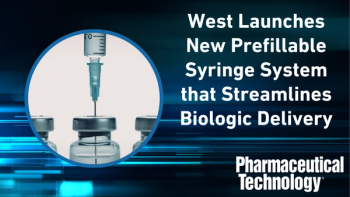
Thomson Reuters Projects Pharma Sales Will Reach $1 Trillion in 2014
The Reuters Annual Pharmaceutical Factbook reveals positive outlook for pharmaceutical industry and key insights into current trends.
The Intellectual Property and Science business of Thomson Reuters released its annual synopsis of pharmaceutical industry trends in its 2014 Pharmaceutical R&D Factbook, compiled by CMR International, a Thomson Reuters business. The report found a number of positive trends across the biopharmaceutical landscape-including an all-time high in pharmaceutical sales and an increase in new molecular entities (NMEs) and in drugs successfully completing late-stage clinical trials-that contradict industry perceptions of a decline in R&D productivity. The CMR Factbook includes data on R&D pipeline volume, success rates, cycle times, regional comparisons, therapeutic areas, generic drugs, and other areas.
Reuters' researchers reported that global pharmaceutical sales reached an all-time high of approximately $980 billion in 2013 and are expected to rise to $1 trillion this year. The rate of growth declined in 2013 compared to previous years, however, due to the expiration of patent protection on a number of blockbuster drugs in markets dominated by lower-cost generic equivalents.
The report also notes that the number of NMEs launched in 2013 was the third highest in the past decade. Regulators and payers are demanding safer, more effective, and differentiated drugs to try to contain the rising costs of healthcare. The industry continues to respond to these challenges by diversifying into areas of unmet need and rare indications. Approximately half of all drugs were specialty indicated for the treatment of cancer, pulmonary arterial hypertension, and HIV. All oncology NME first-world launches in 2013 received orphan drug status. Anti-cancer development continues to attract the highest amount of investment across all therapeutic areas.
There has been a decline in pipeline volumes and success rates in early clinical development phases, yet there is a trend in stable success rates across the later phases. This indicates that the industry is improving its ability to “fail fast, fail cheaply,” which is increasing the success rate of more advanced drug candidates.
“Pharmaceutical R&D is a difficult and expensive process in an industry with high expectations,” said Jon Brett-Harris, managing director of Thomson Reuters Life Sciences, in a press release. “With much of the recent conversation focused on the hurdles in the pharma space, it is reassuring to see positive developments and an encouraging future landscape.”
Source:
Newsletter
Get the essential updates shaping the future of pharma manufacturing and compliance—subscribe today to Pharmaceutical Technology and never miss a breakthrough.




